Abstract
Wetwood samples from standing trees of eastern cottonwood (Populus deltoides), black poplar (Populus nigra), and American elm (Ulmus americana) contained high numbers of aerobic and anaerobic pectin-degrading bacteria (104 to 106 cells per g of wood). High activity of polygalacturonate lyase (≤0.5 U/ml) was also detected in the fetid liquid that spurted from wetwood zones in the lower trunk when the trees were bored. A prevalent pectin-degrading obligately anaerobic bacterium isolated from these wetwoods was identified as Clostridium butyricum. Pectin decomposition by C. butyricum strain 4P1 was associated with an inducible polygalacturonate lyase and pectin methylesterase, the same types of pectinolytic activity expressed in the wetwood of these trees. The pH optimum of the extracellular polygalacturonate lyase was alkaline (near pH 8.5). In vitro tests with sapwood samples from a conifer (Douglas fir, Pseudotsuga menziesii) showed that tori in membranes of bordered pits are degraded by pure cultures of strain 4P1, polygalacturonate lyase enzyme preparations of strain 4P1, and mixed methanogenic cultures from the tree samples of wetwood. These results provide evidence that pectin in xylem tissue is actively degraded by C. butyricum strain 4P1 via polygalacturonate lyase activity. The importance of pectin degradation by bacteria, including Clostridium species, appears paramount in the formation and maintenance of the wetwood syndrome in certain living trees.
Full text
PDF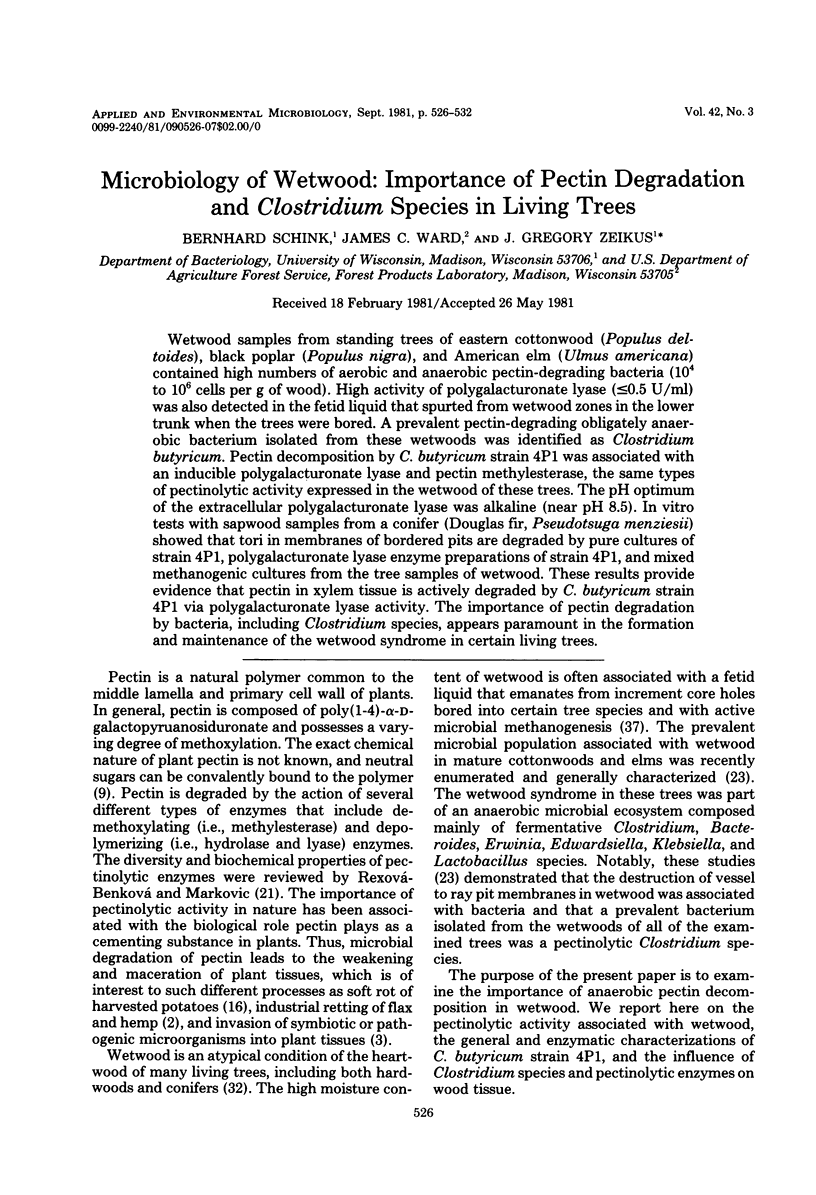
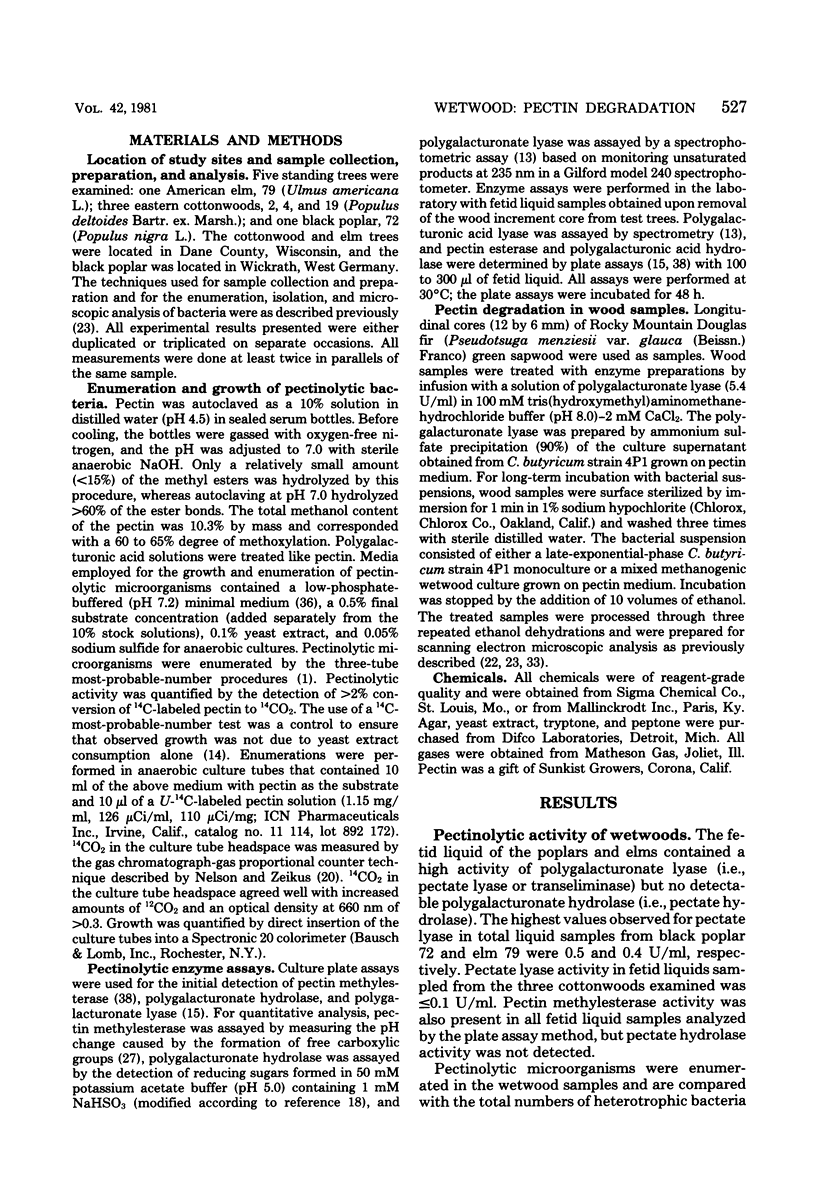
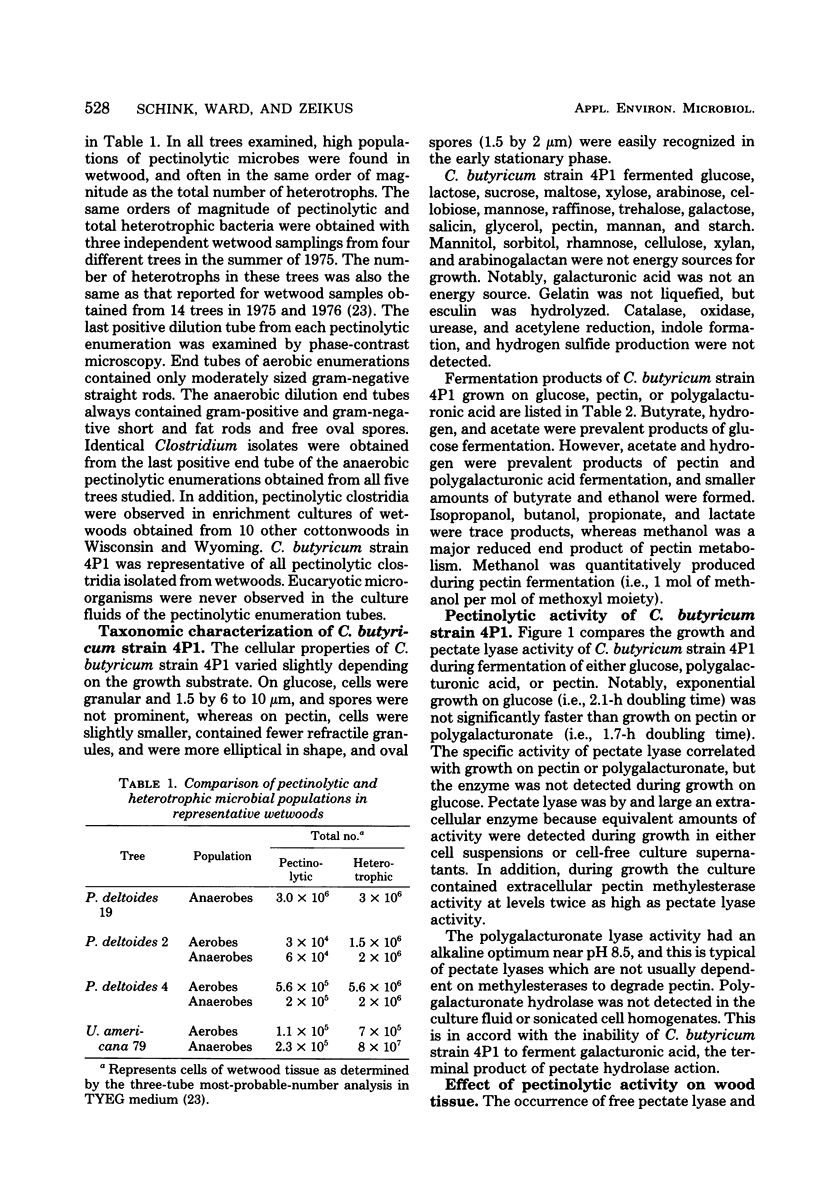
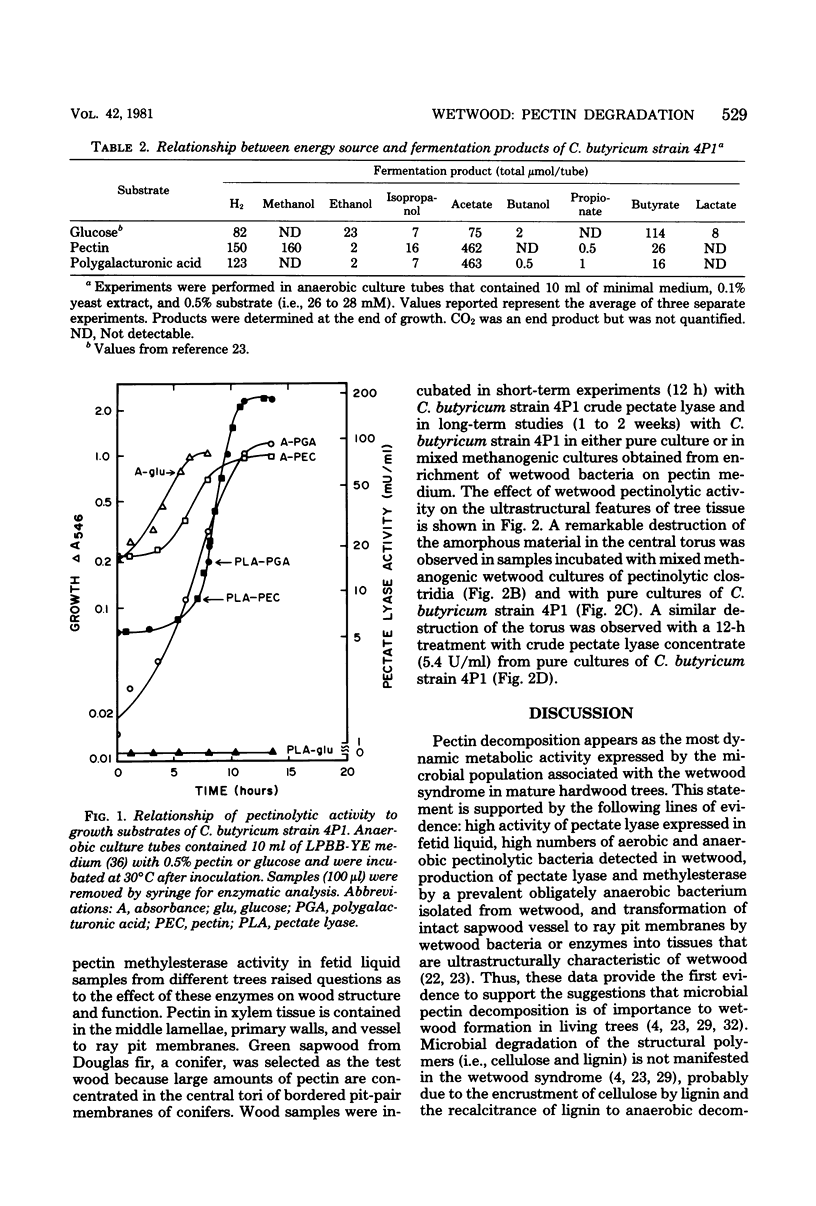
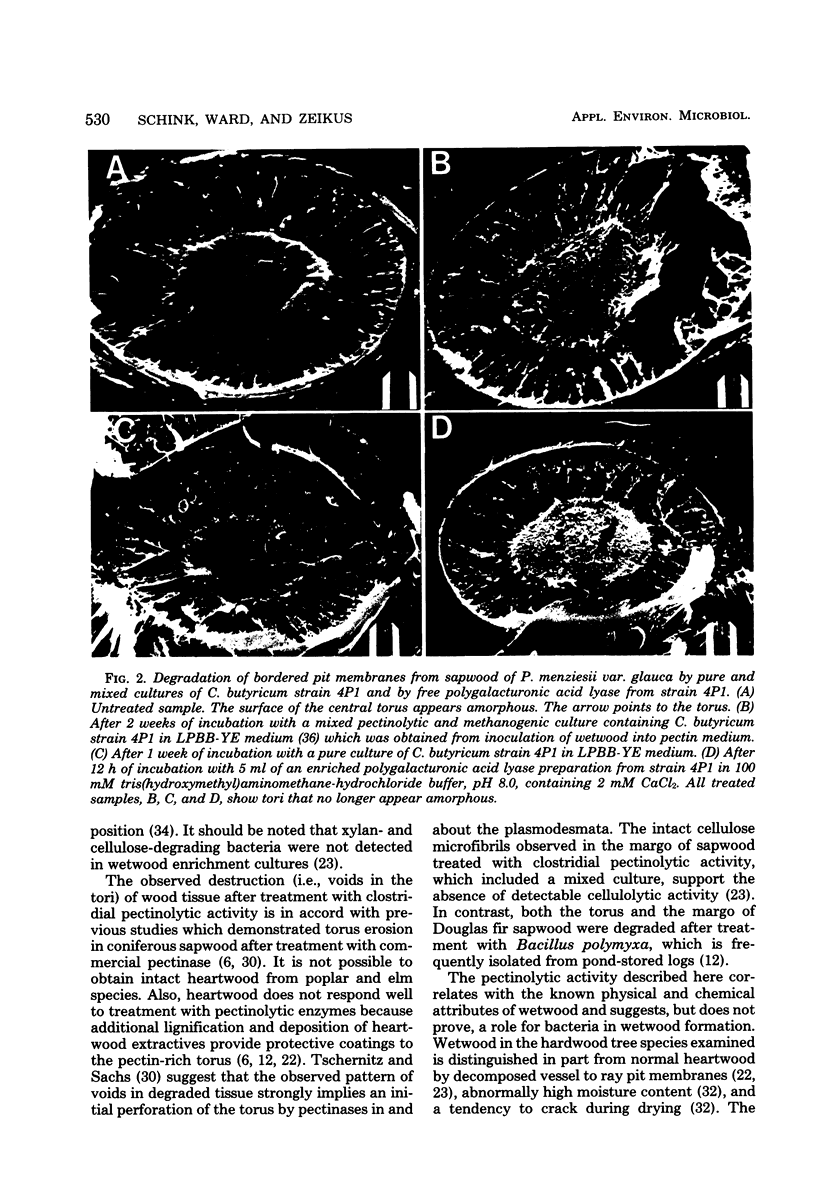
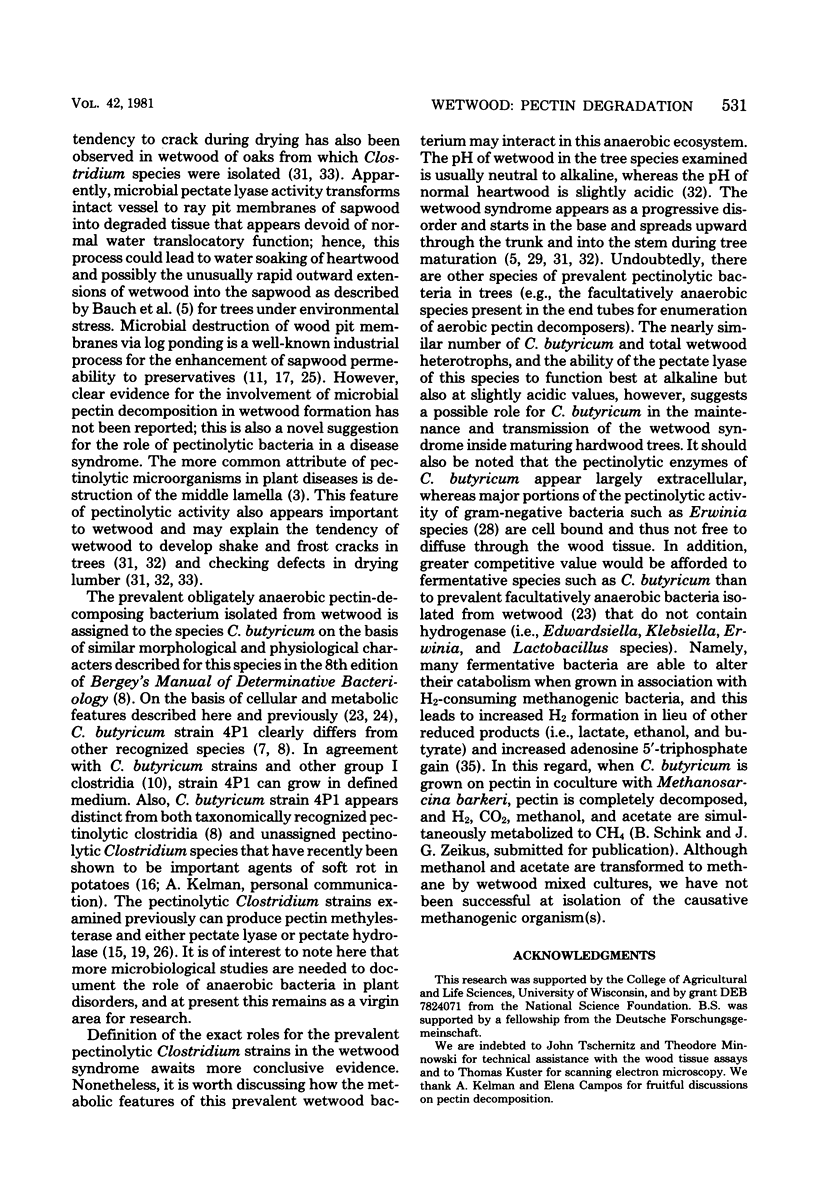
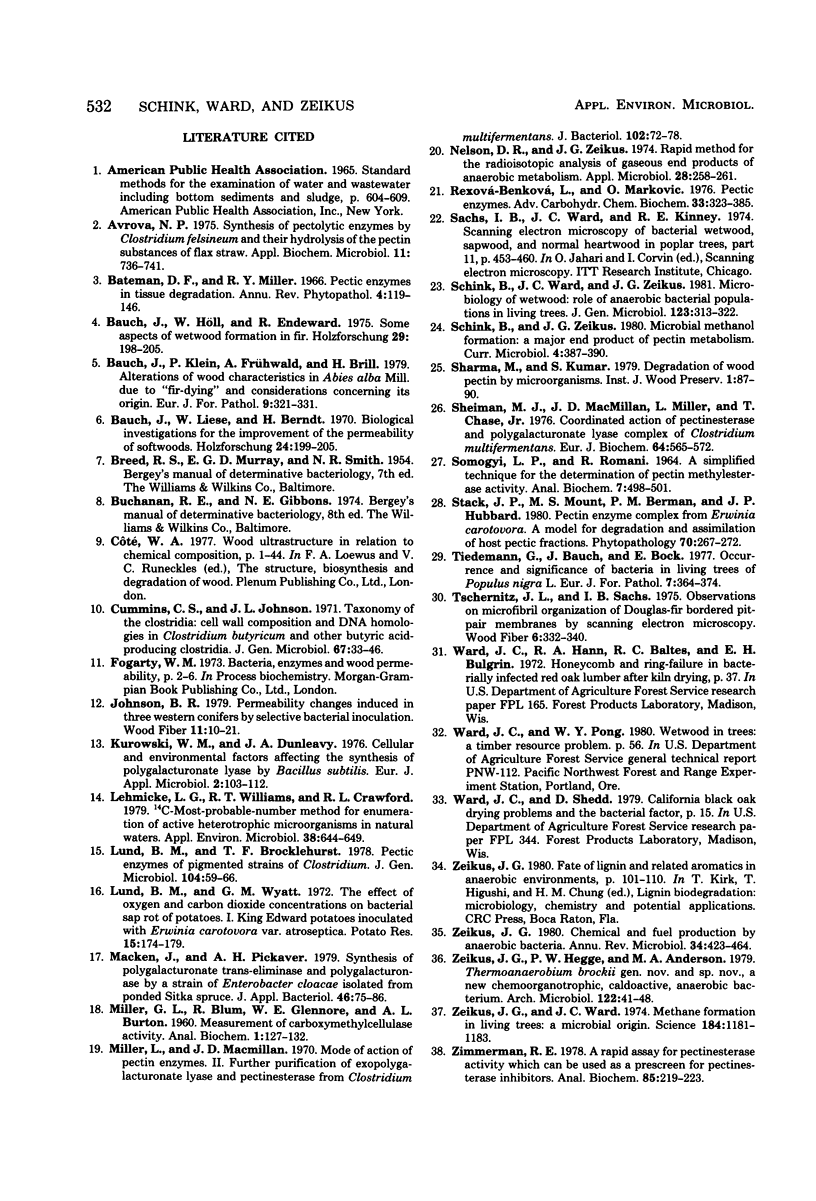
Images in this article
Selected References
These references are in PubMed. This may not be the complete list of references from this article.
- Lehmicke L. G., Williams R. T., Crawford R. L. 14C-most-probable-number method for enumeration of active heterotrophic microorganisms in natural waters. Appl Environ Microbiol. 1979 Oct;38(4):644–649. doi: 10.1128/aem.38.4.644-649.1979. [DOI] [PMC free article] [PubMed] [Google Scholar]
- Miller L., Macmillan J. D. Mode of action of pectic enzymes. II. Further purification of exopolygalacturonate lyase and pectinesterase from Clostridium multifermentans. J Bacteriol. 1970 Apr;102(1):72–78. doi: 10.1128/jb.102.1.72-78.1970. [DOI] [PMC free article] [PubMed] [Google Scholar]
- Nelson D. R., Zeikus J. G. Rapid method for the radioisotopic analysis of gaseous end products of anaerobic metabolism. Appl Microbiol. 1974 Aug;28(2):258–261. doi: 10.1128/am.28.2.258-261.1974. [DOI] [PMC free article] [PubMed] [Google Scholar]
- Rexová-Benková L., Markovic O. Pectic enzymes. Adv Carbohydr Chem Biochem. 1976;33:323–385. doi: 10.1016/s0065-2318(08)60285-1. [DOI] [PubMed] [Google Scholar]
- SOMOGYI L. P., ROMANI R. J. A SIMPLIFIED TECHNIQUE FOR THE DETERMINATION OF PECTIN METHYLESTERASE ACTIVITY. Anal Biochem. 1964 Apr;7:498–501. doi: 10.1016/0003-2697(64)90159-9. [DOI] [PubMed] [Google Scholar]
- Sheiman M. I., Macmillan J. D., Miller L., Chase T., Jr Coordinated action of pectinesterase and polygalacturonate lyase complex of Clostridium multifermentans. Eur J Biochem. 1976 May 1;64(2):565–572. doi: 10.1111/j.1432-1033.1976.tb10336.x. [DOI] [PubMed] [Google Scholar]
- Zeikus J. G. Chemical and fuel production by anaerobic bacteria. Annu Rev Microbiol. 1980;34:423–464. doi: 10.1146/annurev.mi.34.100180.002231. [DOI] [PubMed] [Google Scholar]
- Zeikus J. G., Ward J. C. Methane formation in living trees: a microbial origin. Science. 1974 Jun 14;184(4142):1181–1183. doi: 10.1126/science.184.4142.1181. [DOI] [PubMed] [Google Scholar]
- Zimmerman R. E. A rapid assay for pectinesterase activity which can be used as a prescreen for pectinesterase inhibitors. Anal Biochem. 1978 Mar;85(1):219–223. doi: 10.1016/0003-2697(78)90292-0. [DOI] [PubMed] [Google Scholar]



